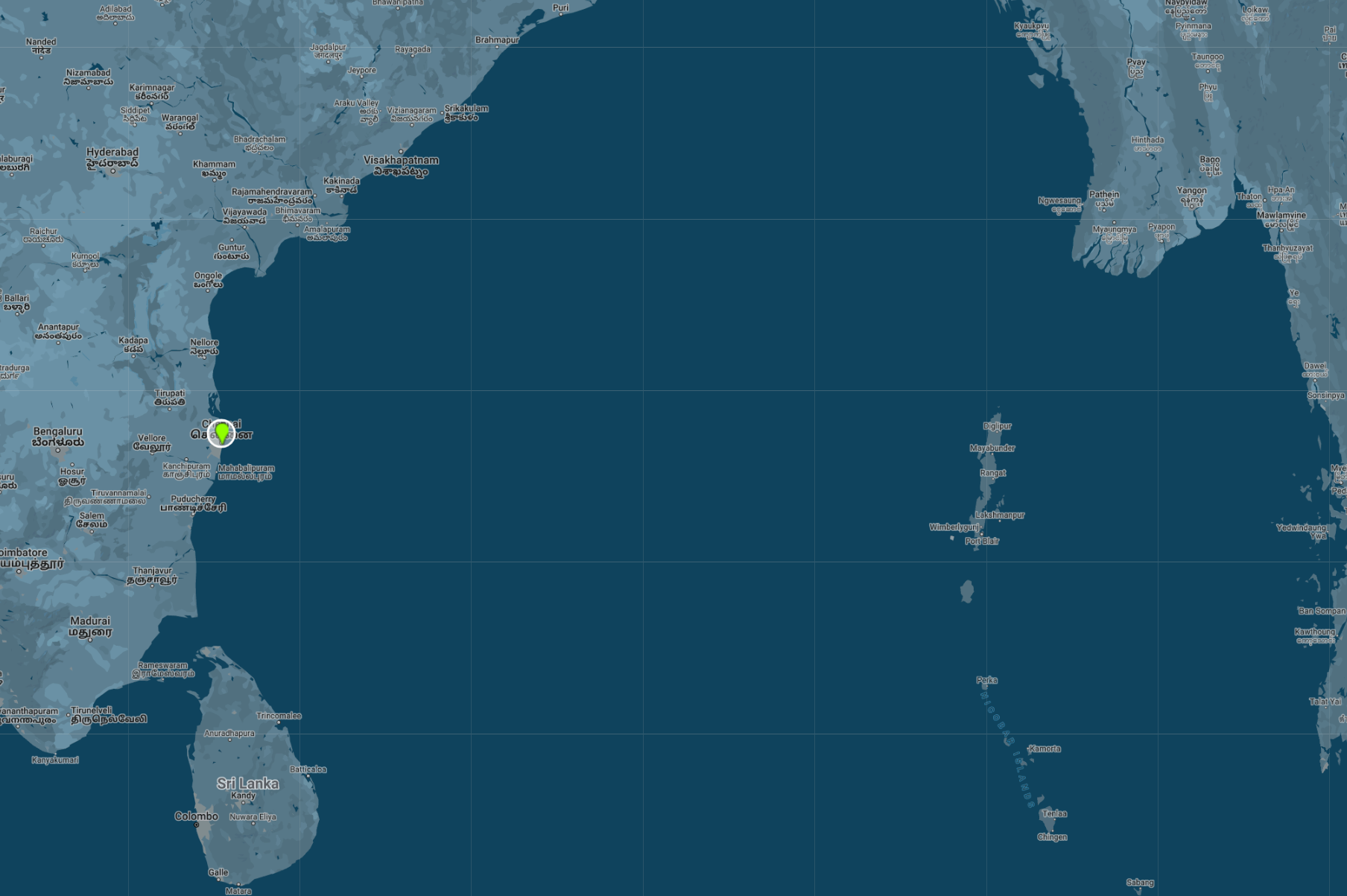Madras

Founded in 1639, Madras - or Madraspatnam as it was originally known - became the primary outpost of the East India Company on the Coromandel Coast. The core of the town was the fortified settlement of Fort St. George, which became the nucleus of the European part of the city.

Madras became a leading colonial metropolis. As today’s Chennai it is one of the world’s largest megacities, home to almost twelve million people. It is one example among many early modern nodes that transformed into a massive urban conglomeration and still retains an outsized economic importance at the trans-regional level.
The East India Company was granted rights to settle in Madras by a local nayak, who himself was a sometime vassal of the king of Golconda, a Muslim sultanate nominally ruling over large stretches of southern India. The English motivation for settlement here was motivated by two factors. First, the Portuguese had long operated a trading settlement in the environs of the town. Second, Dutch competition along other stretches of the Coromandel Coast had made it difficult for the East India Company to make an entrance into local markets. The foundation of Madras changed the fortunes of the company considerably.
Elihu Yale - later founder of Yale University and a figure who made a good deal of his fortune from the Atlantic slave trade - got his start as a East India Company clerk in late seventeenth-century Madras. He eventually rose to the rank of second in council in Madras, earning a handsome salary of £100 per year. Despite, or perhaps because of, his high-ranking position, Yale was heavily involved in private trade - which was frowned upon by his employer - especially with the kingdom of Siam. Elihu's brother, Thomas, was later sent on an embassy from Madras to Siam. On a separate occasion, Elihu Yale dispatched a bundle of rubies from Madras to the king of Siam, but when they were judged to be of little value this caused a scandal at the court. Madras would continue to be an important outlet for company trade with southeast Asia into the nineteenth century, and not only for the Company, but for Indian merchant communities too.
Madras also attracted large numbers of Tamil, Armenian, and other Asian merchants, who from the eighteenth century lived in “Black Town,” an early example of racial segregation in maritime Asia.
The Company’s factory in Madras worked hard to maintain deep links with Madras’ hinterland, which boasted some of the most sophisticated textile industries in India. Some of these were located in villages hundreds of miles inland. The procurement of these textiles was no easy matter for the company, and they depended upon a range of local capitalist intermediaries to bring the items to Madras for export. Often the East India Company had to compete with Indian merchants for orders and failed to procure the volume of cloth they demanded.
From the mid-eighteenth century, Madras became a springboard for the territorialisation of British colonial power in the Indian subcontinent. In that period, the city was an epicentre of Anglo-French rivalry, vying for supremacy in southern India with the French base at Pondicherry, some 150 kilometers south.
References:
Sinnappah Arasaratnam, Merchants, Companies, and Commerce on the Coromandel Coast, 1650-1740 (New Delhi: Oxford University Press, 1986).
Maurice Collis, Siamese White (London: Faber and Faber, 1936).
Prasannan Parthasarathi, The Transition to a Colonial Economy: Weavers, Merchants and Kings in South India, 1720-1800 (Cambridge: Cambridge University Press, 2001).
Giorgio Riello, "Factories before the Factory: The East India Company's Procurement in India and British Industrialisation, 1650-1750," Kristine Bruland, Anne Gerritsen, Pat Hudson and Giorgio Riello eds., Reinventing the Economic History of Industrialisation (Montreal: McGill-Queen's University Press, 2020), 262-275.
Featured Image Credit: Madraz et le Fort St. Georges pris par les François commandés par Mr. Mahé de la Bourdonnais, le 21 septembre 1746 https://commons.wikimedia.org/wiki/File:Plan_de_Madras_pris_par_les_Francais_en_1746.jpg
